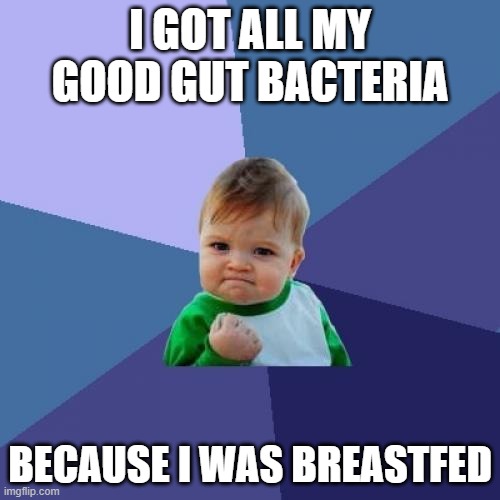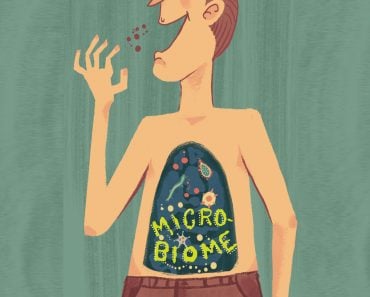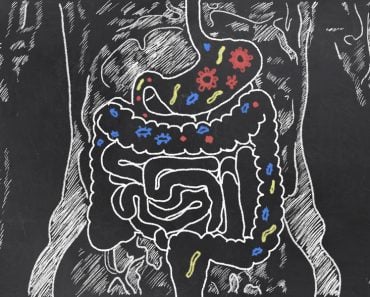Table of Contents (click to expand)
A baby’s gut begins to change as soon as they are born. Feeding on breast milk, solid foods and exposure to microbes changes their gut. By the age of 3 years, a toddler’s gut has stabilized.
An unborn baby gets all the nutrients it needs from the placenta, but as soon as it leaves the womb and enters the world, everything changes.
They must get used to eating and digesting all kinds of different foods, which naturally affects their gut. In fact, a variety of liquids and solid foods is important for a baby’s gut to properly develop as the baby matures.
Recommended Video for you:
The Gut Of A Newborn
The bacteria that settle in a newborn’s gut play a crucial role in their overall health throughout their life. The gut bacteria continuously evolve and change as the baby is introduced to different foods, which is why it’s so important to feed babies the right food.
Other factors that can influence the way babies’ guts develop include whether they were breast-fed or bottle-fed, as well how they were born – naturally or by C-section.
The most common strains of gut bacteria in newborns are Enterobacteriaceae and Staphylococcus; over time, the gut also hosts Bifidobacteria. This last bacterium has genes that help break down lactose, the primary sugar in milk.
Breast Milk Affects The Baby’s Gut
After birth, many babies get their nutrients from breast milk. Breast milk contains fats, proteins and carbohydrates—everything a little one needs to grow big and strong, all designed specifically for their individual nutritional needs.

Breast milk also contains the antibodies developed by the mother’s immune system to defend against microbes in her environment. These antibodies reach the baby’s gut and form a new defense team that prevents bad bacteria from attaching to the inner walls of the baby’s intestine. Antibodies can ward off a wide range of harmful germs that the baby’s immune system has never encountered. This is crucial to preventing babies from suffering stomach problems in their early months and years.
In addition to antibodies, breast milk also contains human milk oligosaccharides—large sugar molecules that nourish the good bacteria in the baby’s gut. It also boosts the baby’s gut immunity by activating their gut immune system.
Breast milk also contains growth factors that allow Bifidobacteria to flourish.
But how did these gut bacteria enter the baby’s gut in the first place? Research suggests that the microbes come from amniotic fluid that the baby may have swallowed while in the uterus. There is conclusive research demonstrating that a baby’s gut bacteria is very similar to that of their mother.
Breast-fed Vs. Bottle-fed
Plenty of research has documented the benefits of breastfeeding over using formula. Why one is better than the other is a long story, but if you want more information about why this is so, you can read this excellent review.
Breast milk is rich in good gut bacteria. By switching to formula, those potentially good bacteria are lost. Fortunately, there is now a variety of probiotic formula milk options that come packed with the goodness of gut-colonizing bacteria.

It is quite a task to make the perfect formula for milk that offers everything that breast milk does. This influence of breast milk on gut development is the reason why breast milk is recommended over formula.
Breast milk itself is extremely dynamic in its composition and changes based on the mother’s diet, age and environment, among many other factors. Therefore, it is difficult to pin down a standard recipe for formula milk that is ideal for an infant’s gut.
The Baby’s Gut At 6 Months
At about 6 months of age, when a baby begins to eat solid food, things get interesting. This new world of food contains a wide range of bacteria that can set up shop in a baby’s gut.
Bacterial species, such as those of the genera Bacteroides, Ruminococcus and Clostridium, all seek a place in the empty real estate of the baby’s developing gut. These bacteria have genes that break down difficult-to-digest food molecules and synthesize vitamins that the body cannot produce.
The Toddler’s Gut
By the age of three, infants develop a digestive system similar to that of adults. The gut bacteria colonies established in these early days will influence their digestive health and immunity throughout their lives.

Once established by the age of three, the infant’s gut bacteria (or microbiome) remains relatively stable and only changes in the event of disease, infection, poor nutrition or antibiotic use.
Conclusion
As we age and try new foods, some of which may be rather questionable, not much changes in our gut. Our innards are more or less stable by the time we reach the age of three.
Most changes that occur after the age of three affect the gene expression of established gut bacteria. As a growing body of research continues to shed light on this topic, we are understanding more and more how important gut bacteria are for our lives.
It is fascinating to see how much of our health depends on gut bacteria. Gut bacteria not only affect digestion, but also our sleep patterns, the immune system, our metabolism, mental health and much more. As a result, the probiotic industry is growing tremendously and companies are always looking for ways to promote gut health and immunity in order to keep the little critters in our gut happy and thriving.
References (click to expand)
- Kent, R. M., & Doherty, S. B. (2014, October). Probiotic bacteria in infant formula and follow-up formula: Microencapsulation using milk and pea proteins to improve microbiological quality. Food Research International. Elsevier BV.
- Tanaka, M., & Nakayama, J. (2017, October). Development of the gut microbiota in infancy and its impact on health in later life. Allergology International. Elsevier BV.
- Andreas, N. J., Kampmann, B., & Mehring Le-Doare, K. (2015, November). Human breast milk: A review on its composition and bioactivity. Early Human Development. Elsevier BV.
- Robertson, R. C., Manges, A. R., Finlay, B. B., & Prendergast, A. J. (2019, February). The Human Microbiome and Child Growth – First 1000 Days and Beyond. Trends in Microbiology. Elsevier BV.
- Pannaraj, P. S., Li, F., Cerini, C., Bender, J. M., Yang, S., Rollie, A., … Aldrovandi, G. M. (2017, July 1). Association Between Breast Milk Bacterial Communities and Establishment and Development of the Infant Gut Microbiome. JAMA Pediatrics. American Medical Association (AMA).












